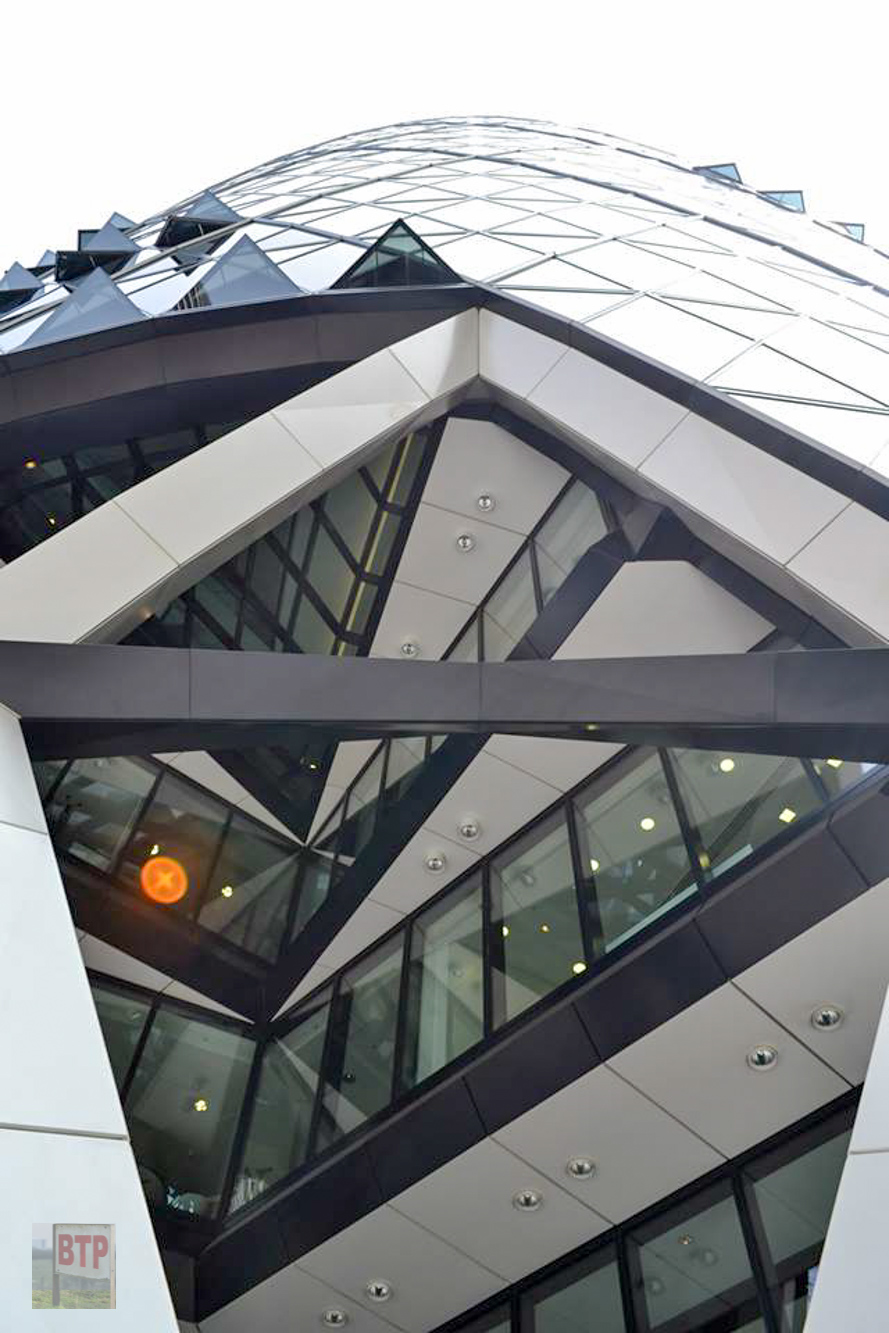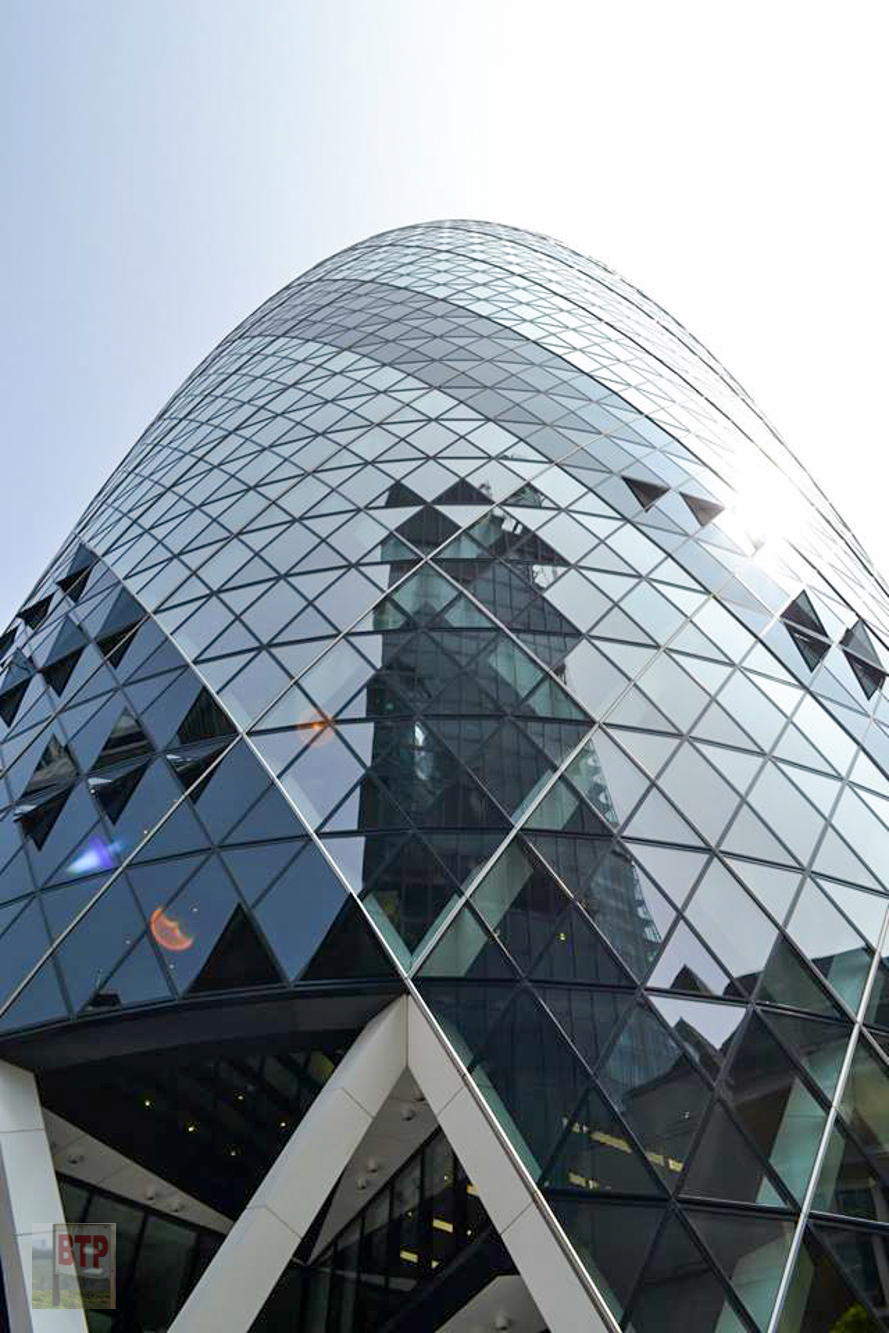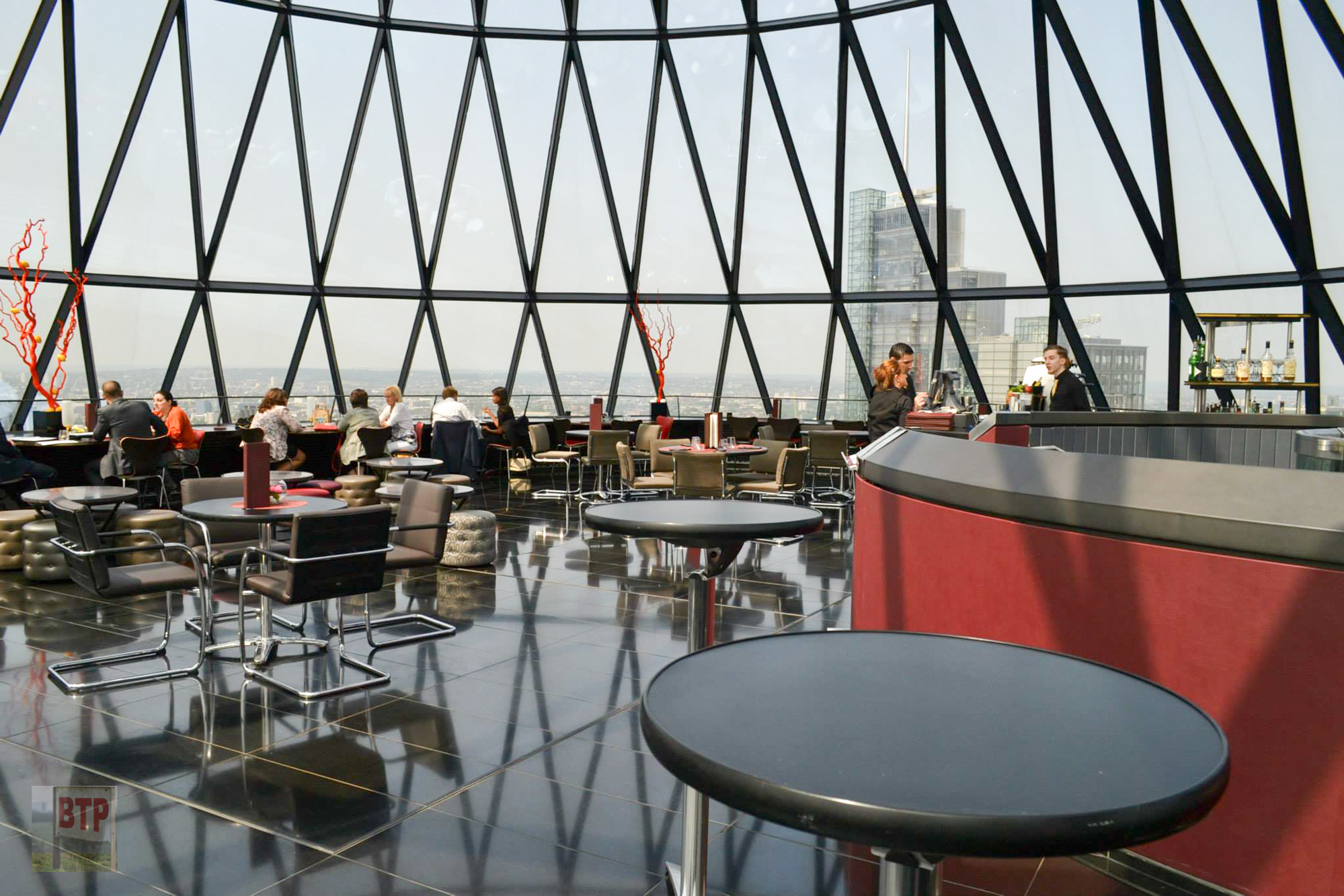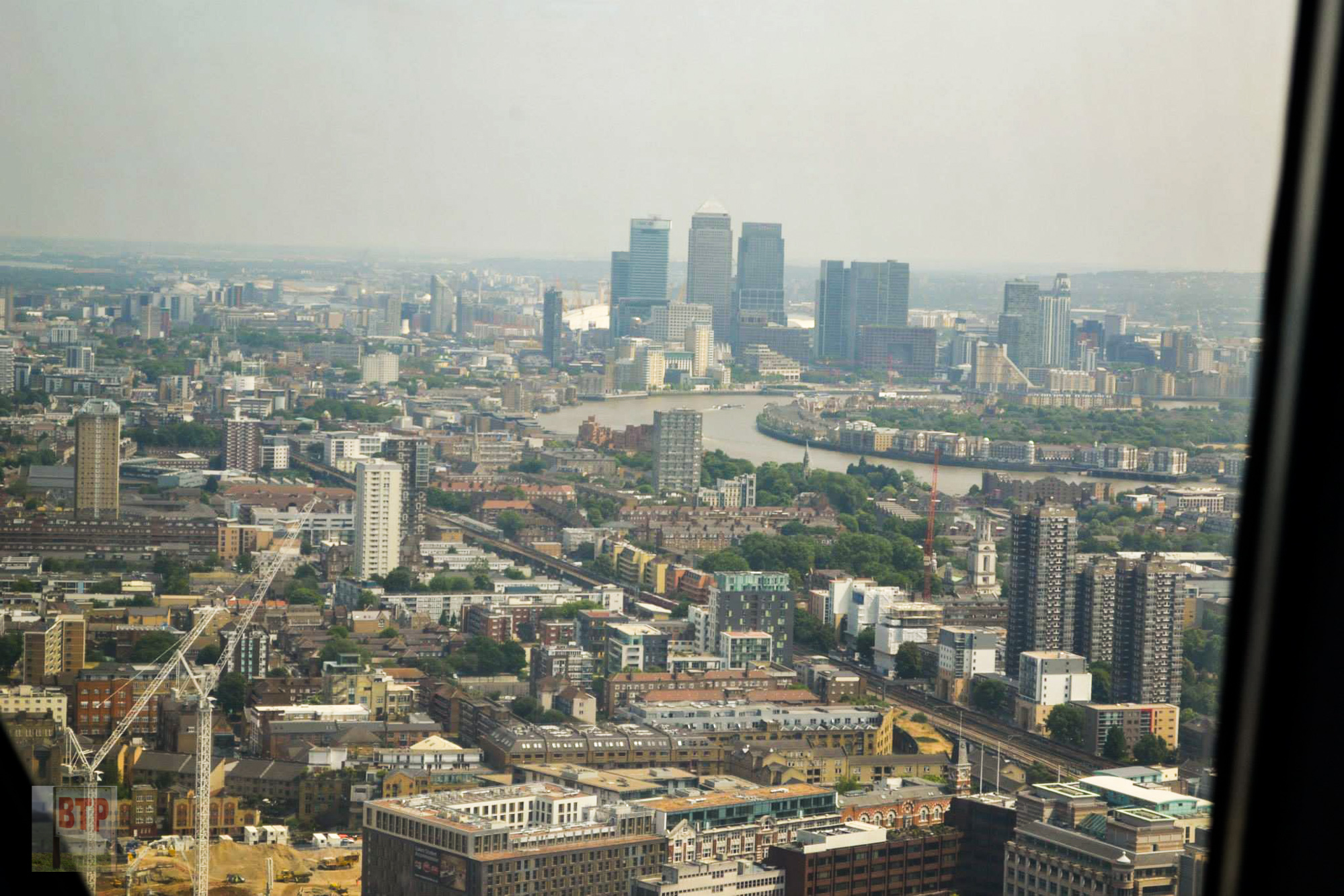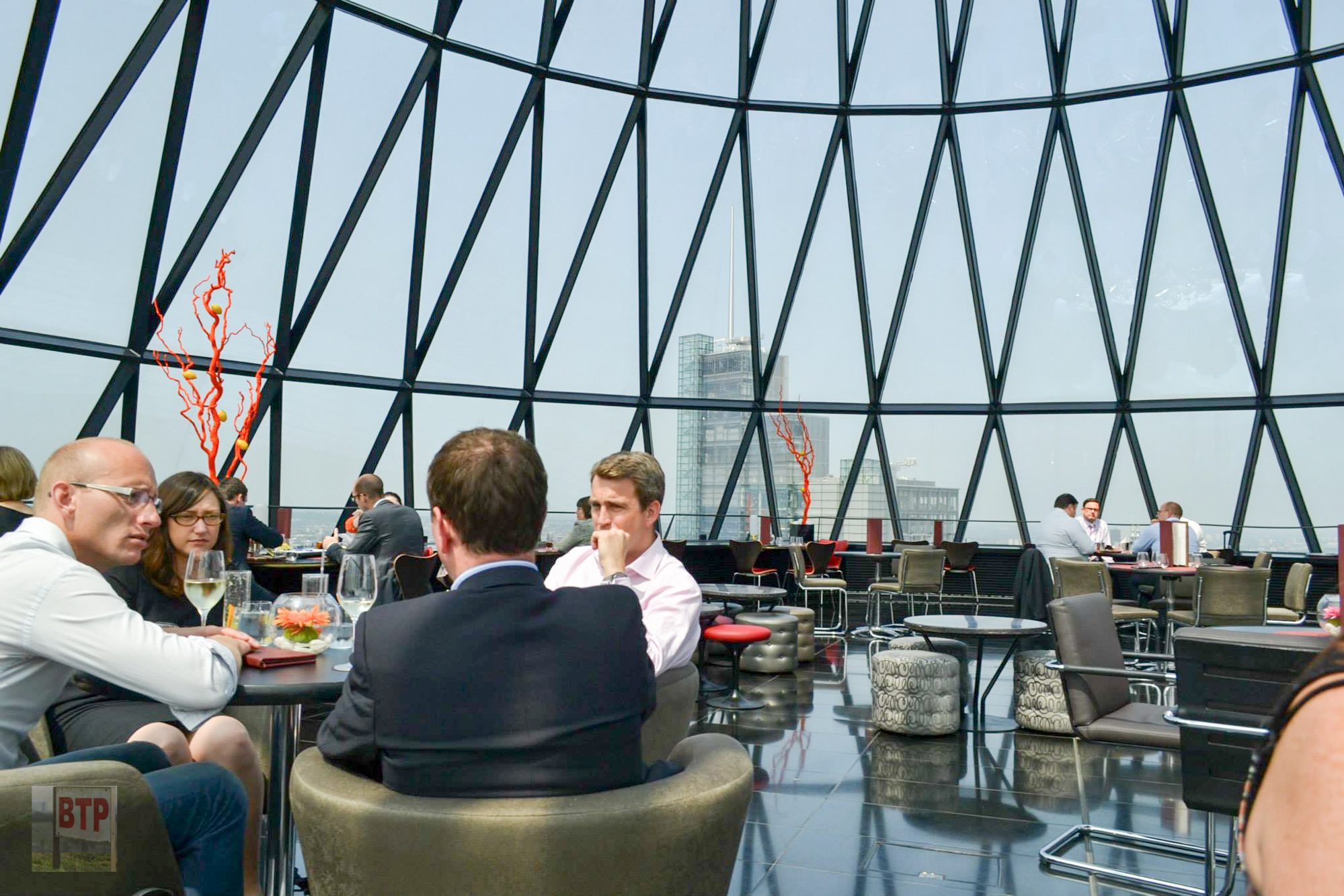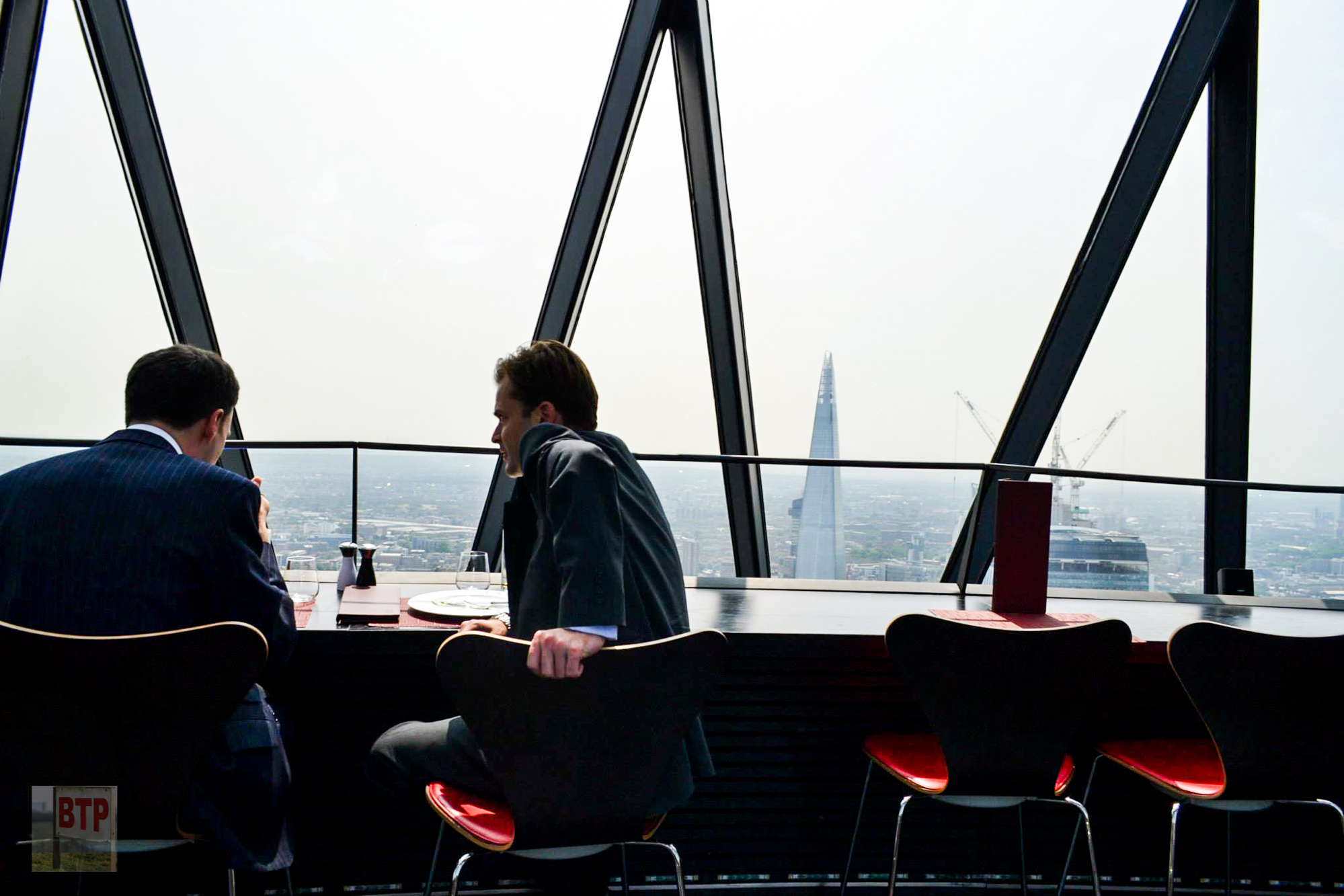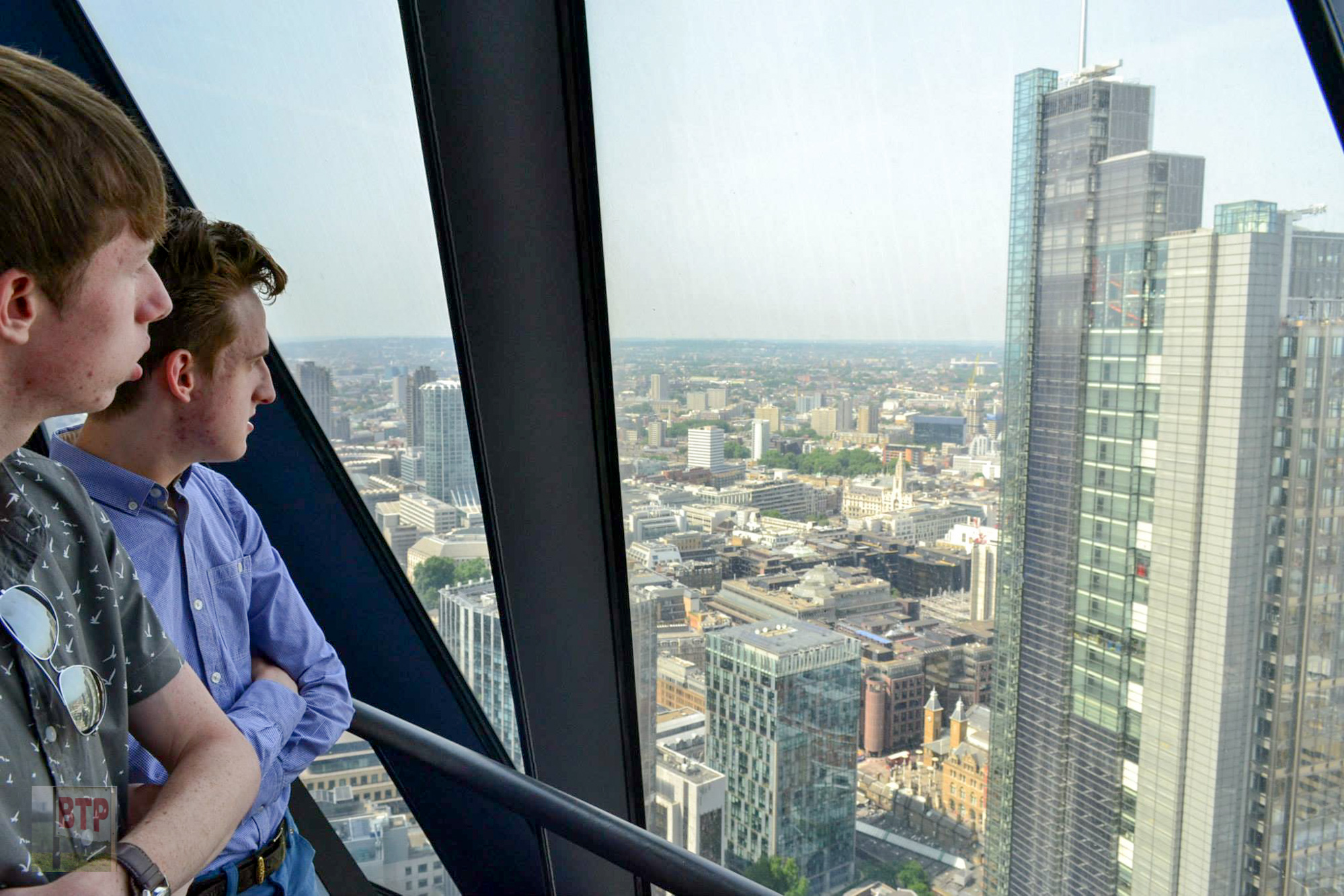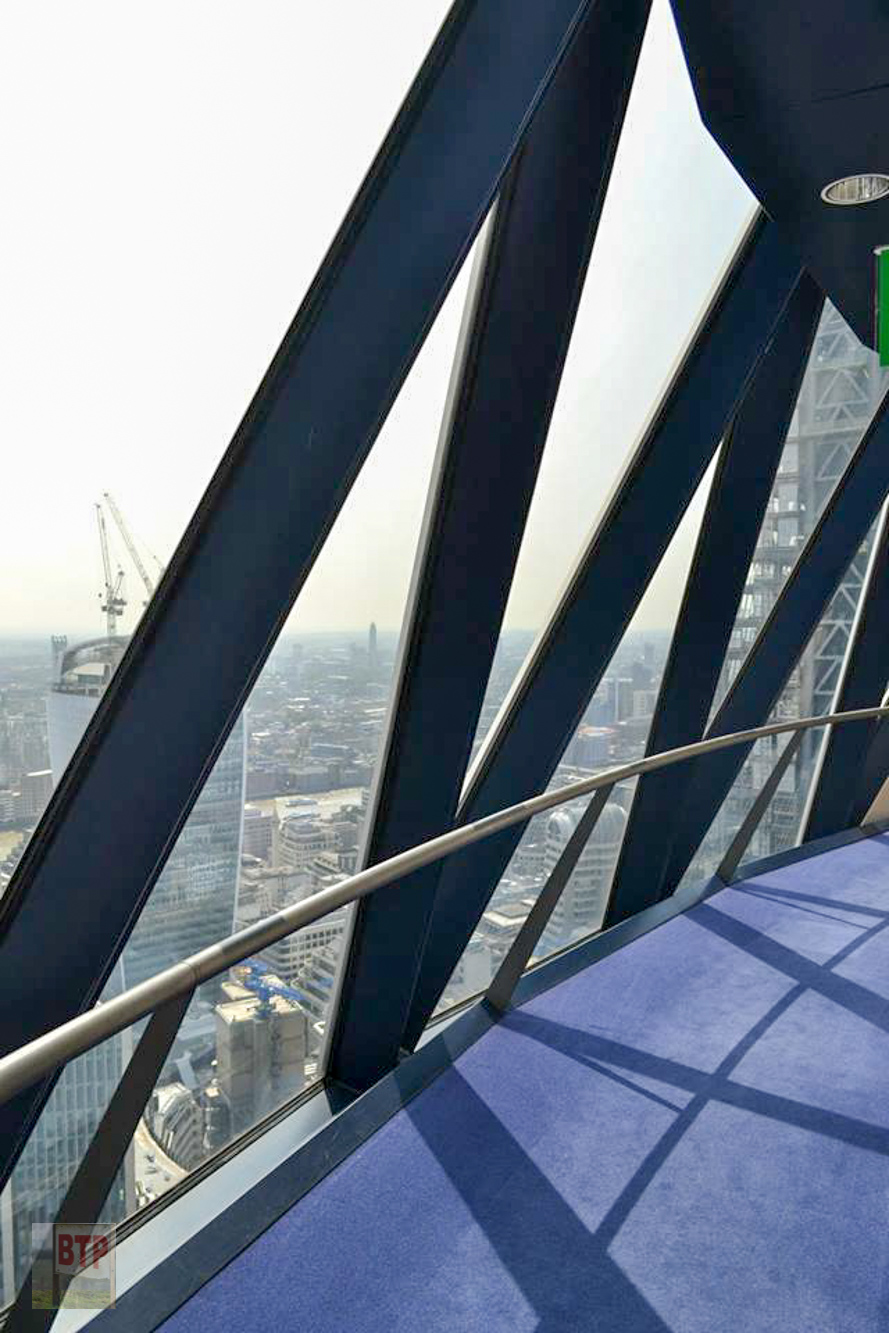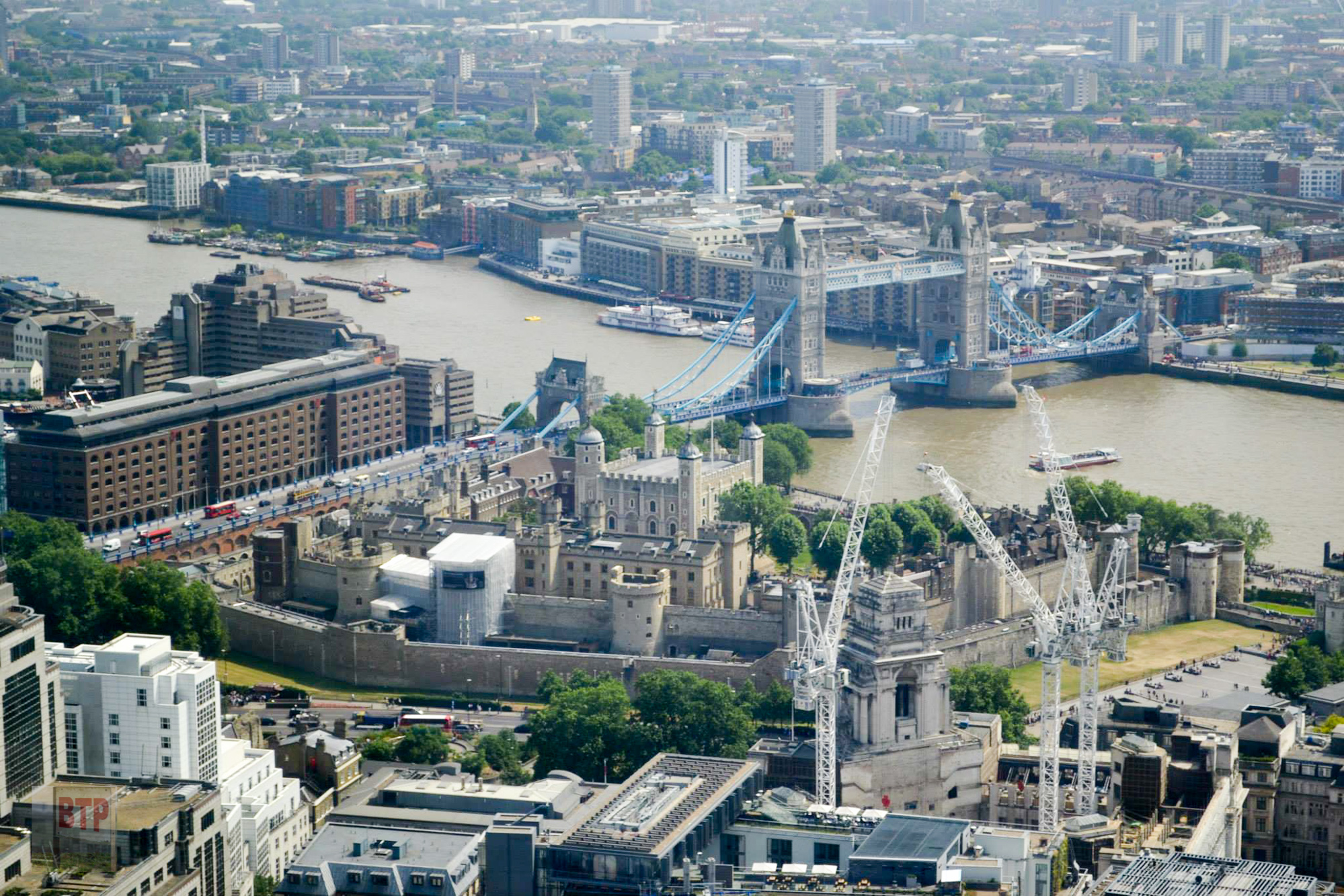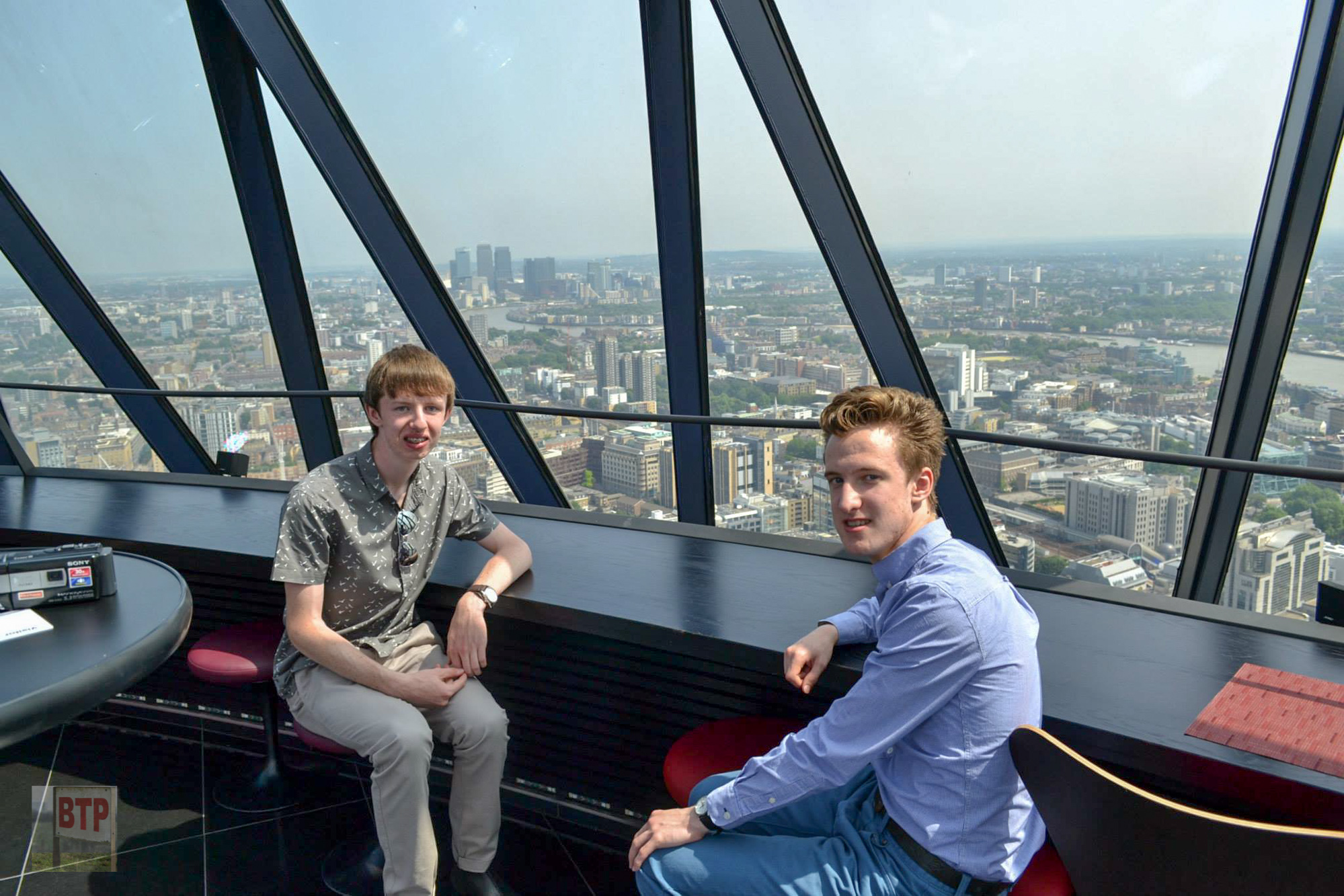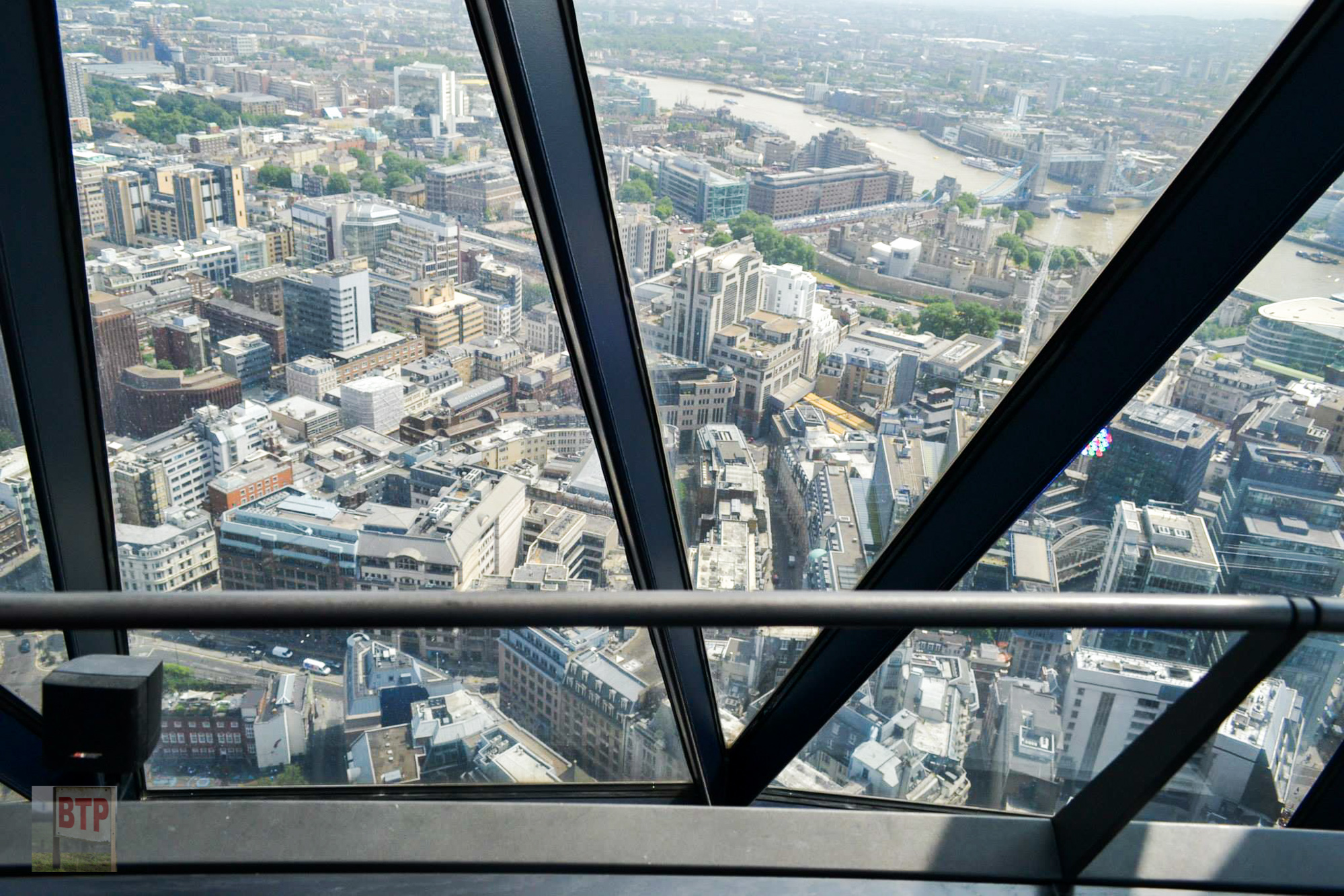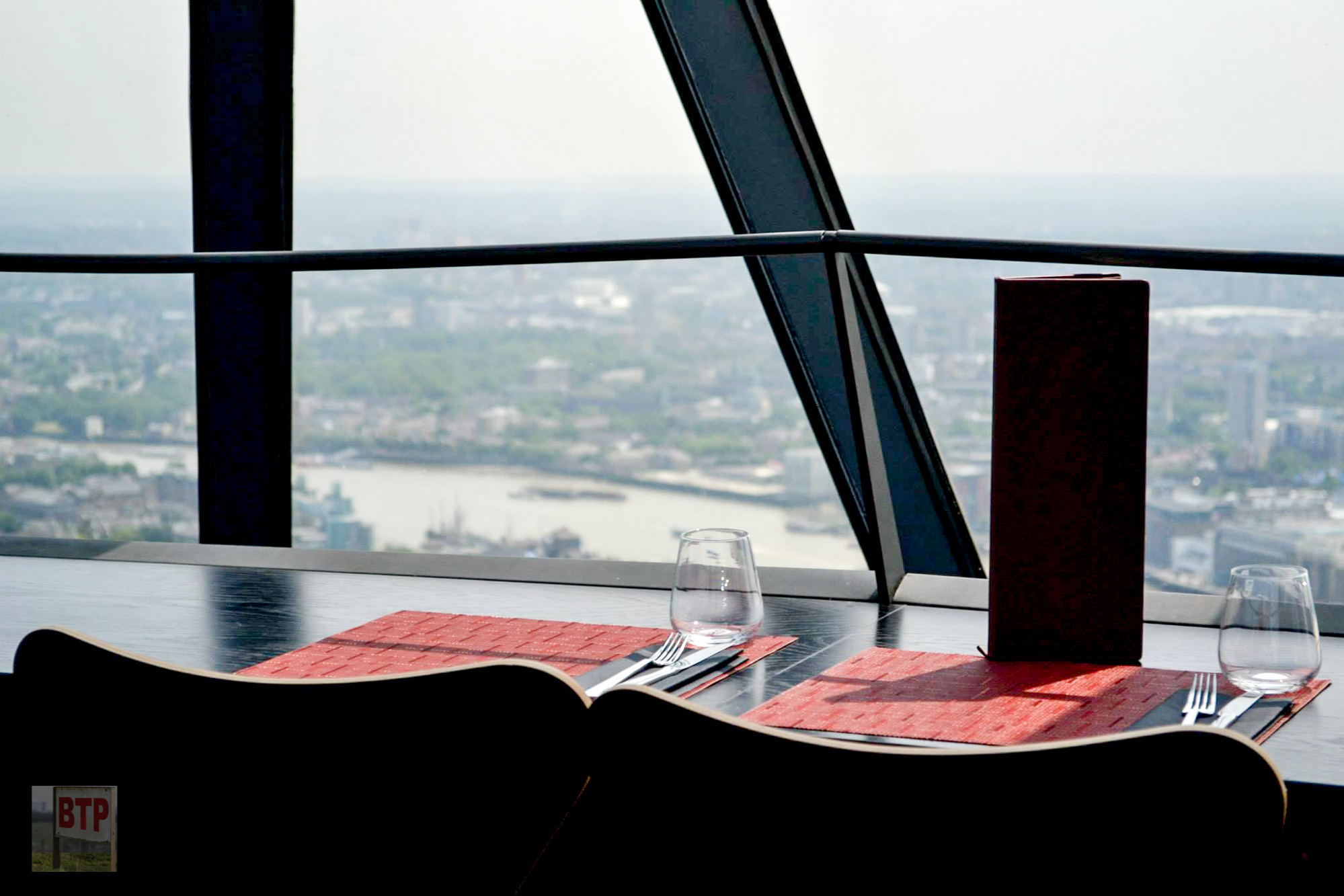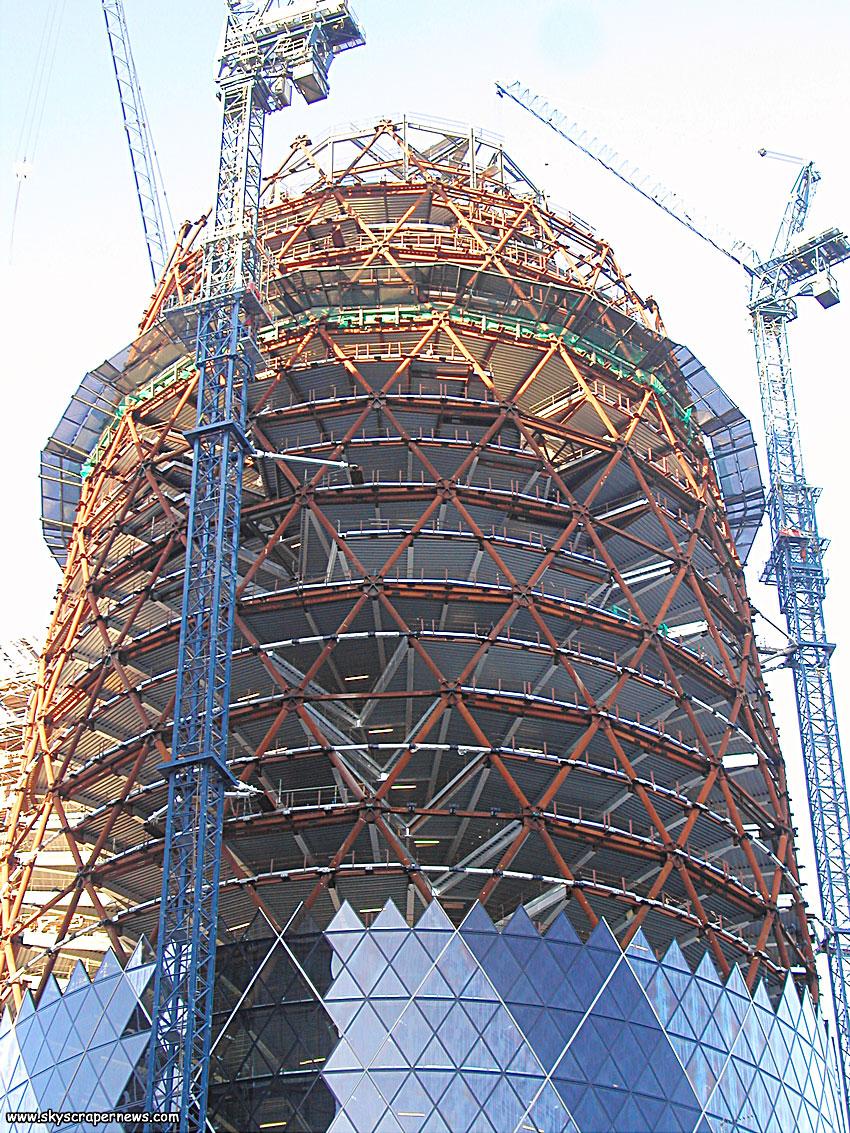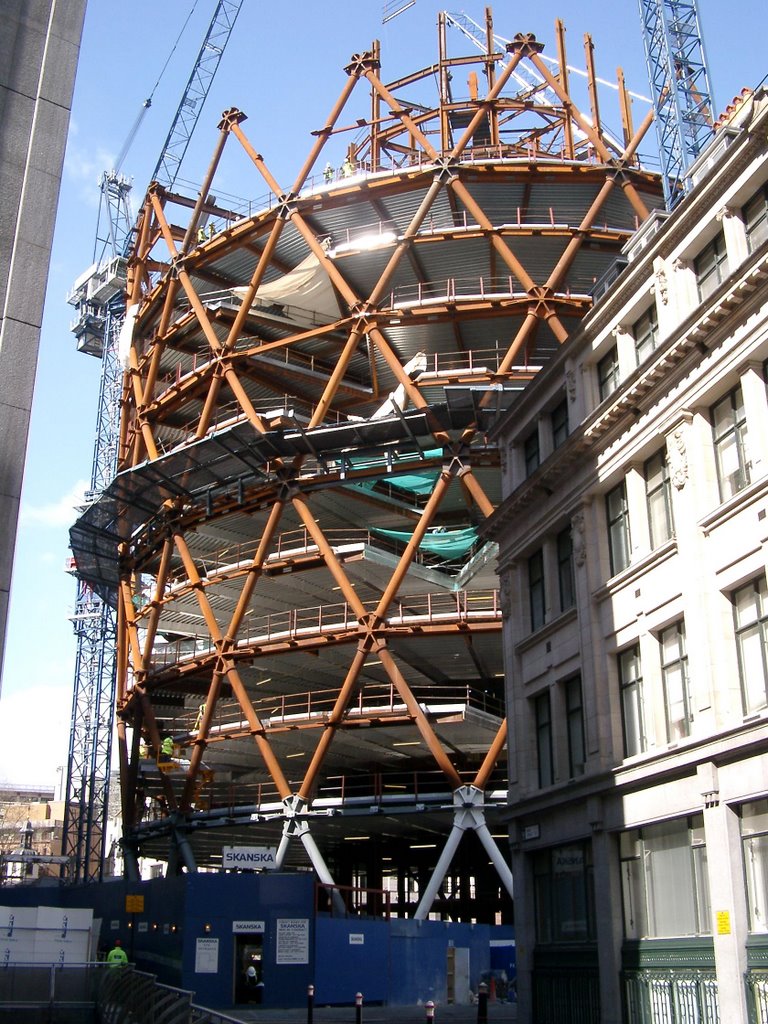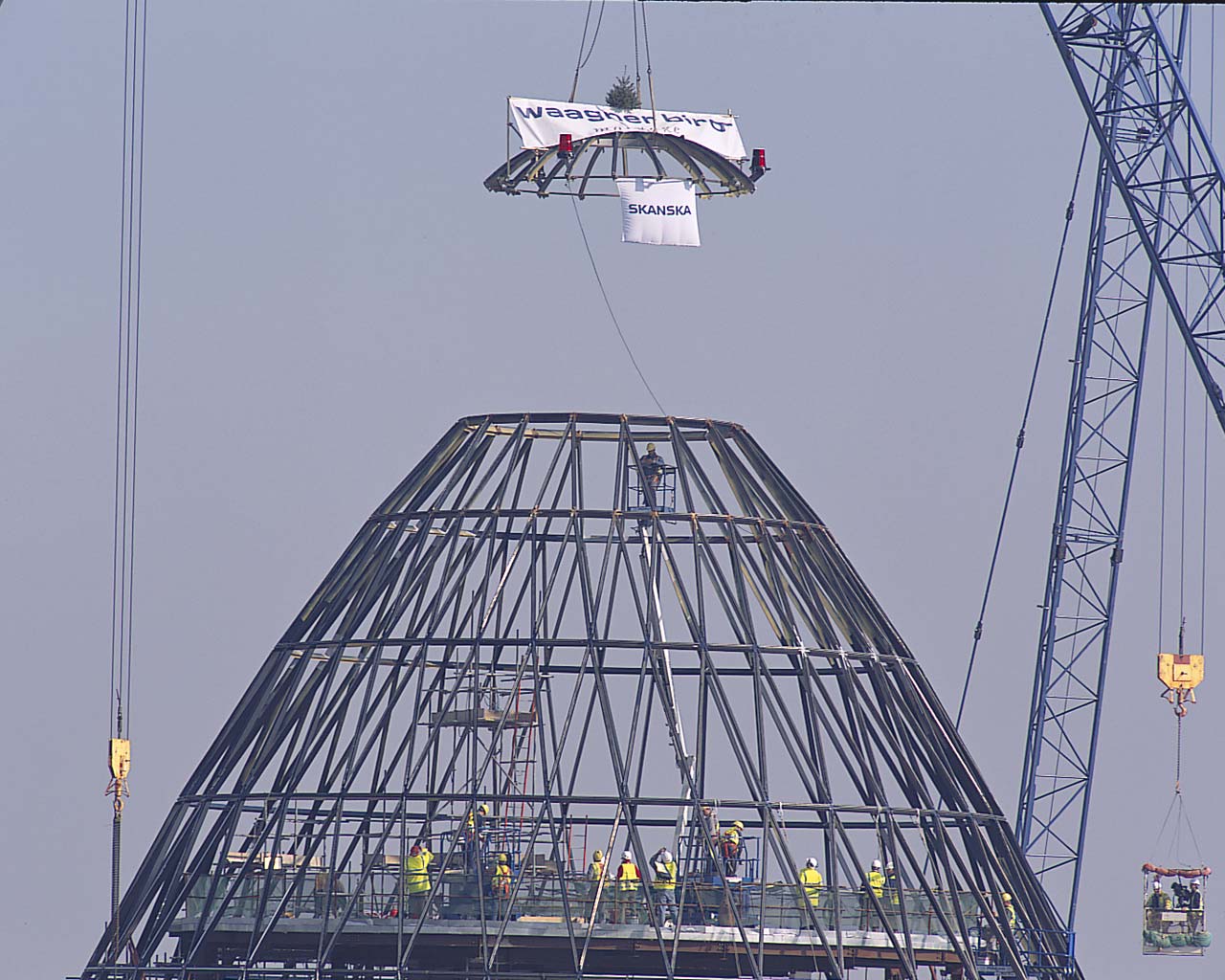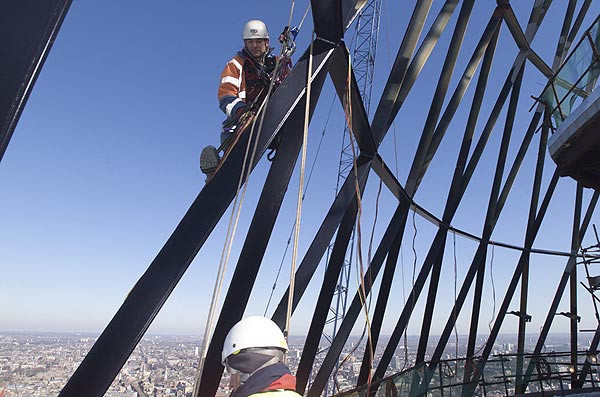This is one of our most memorable visits since we have started Beyond the Point. Liam and I were given exclusive access to the very top of one of Europe’s most icon landmarks, the Gherkin. Situated in the financial district of London, we were only 30 seconds away from the Lloyds building. Norman Foster, of the Foster and Partners architectural firm, was the man responsible for designing the 40-storey building. The firm has worked on other famous buildings such as Wembley Stadium and London City Hall, both of which are known for their innovative design approaches. The design of the Gherkin is heavily based around an energy efficiency design and the design of the glass icon represents this. Hence, the building only uses half of the energy that a similarly sized tower would use.
Architectural design website, Design Book Mag, details the design as:
There were open shafts built in between each floor that act as ventilation for the building and they require no energy for use. The shafts pull warm air out of the building during the summer and use passive heat from.
The beginning of the Gherkin’s history starts with a bang in 1992 as the IRA targets London’s Financial District by detonating a bomb near the Baltic Exchange. The building was torn down and city officials decided to put a larger tower in its place. The Gherkin began as a much larger building that was dubbed the “Millennium Tower” but plans failed to materialise. The original design of the building raised fears that it could impact air traffic passing through the capital to get to Heathrow and there were also concerns that it may interfere with the sight-lines of St. Paul’s Dome – a legal protection ensuring certain views of St Pauls aren’t obstructed. Once the original design was shot down, Norman Foster created the scaled-down version that we know today.
Construction began in 2001 and the Gherkin was complete in December 2003. It didn’t open for the public until almost half of a year later. With 41 floors, the tower is 180 metres high and we were lucky enough to get a view from the very top – thankfully not by walking the whole way! Since completion, the building has won a number of prestigious awards including a RIBA Stirling Prize in 2004, and in 2005 it won the vote for the most admired new building in the world. It has also featured in films including Basic Instinct 2 and Harry Potter and the Half Blood Prince. In September 2006, the building was sold for a staggering £630 million, making it Britain’s most expensive office building!
Construction Photos from WillFox.com, Panoramio.com and Archifever.com.
This entry was posted in Location Report
